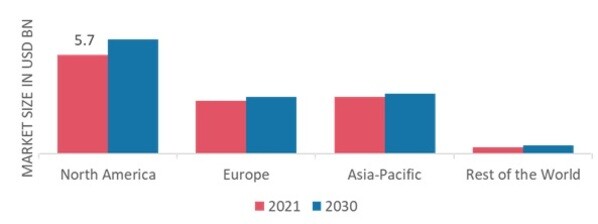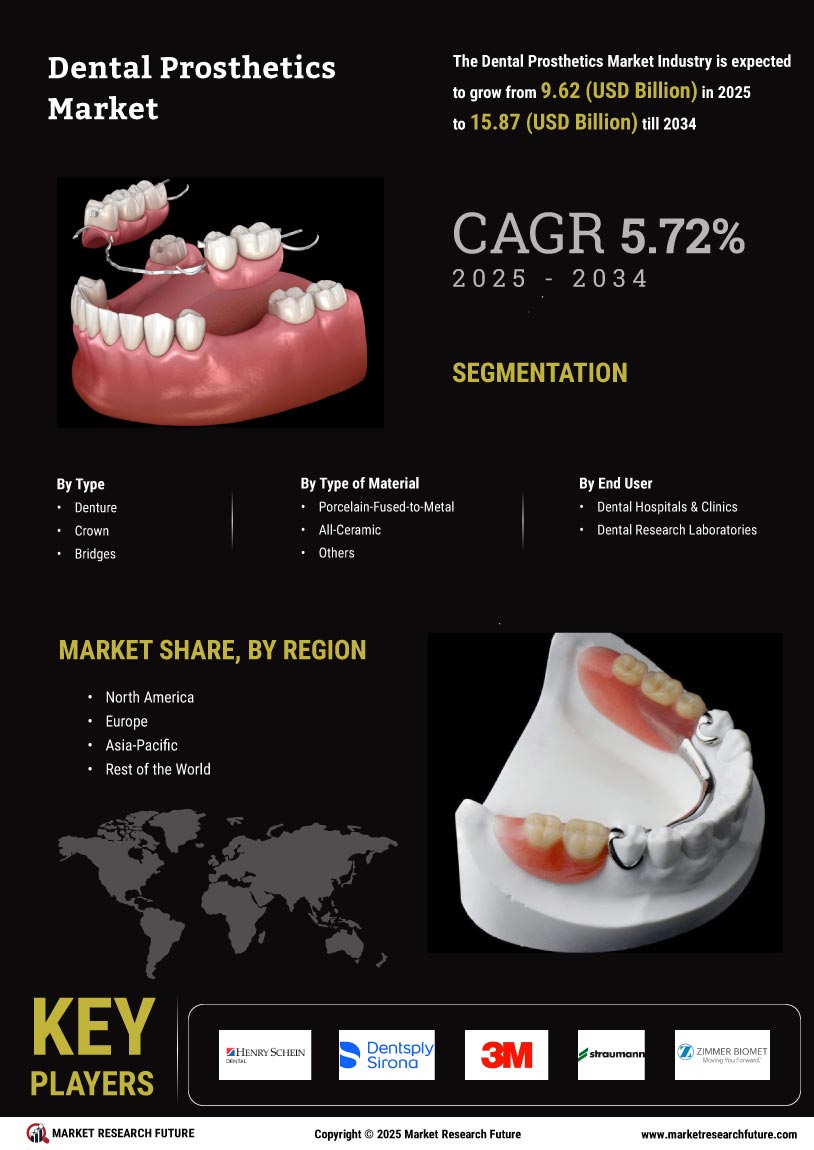By region, the study provides market insights into North America, Europe, Asia-Pacific and the Rest of the World. The North America Dental Prosthetics market accounted for USD 5.6 billion in 2022, with a share of around 45.80% and is expected to exhibit a significant CAGR growth during the study period. The dominating reasons are the rising incidence of accidents and sports injuries coupled with increasing intake of junk food and rapid growth of the senior population leading to dental caries resulting in increasing demand for dental implants and prosthetics in North America.
For example, according to the study titled "Fluoride withdrawal and dental caries in children a 7-year follow-up evaluation of second-grade schoolchildren in Calgary and Edmonton, Canada," published in July 2021, the prevalence of primary caries in Calgary was The crude rate and crude prevalence of primary caries in Calgary compared to Edmonton were 64.8% and 55.1% in Edmonton, respectively.
Further, the major countries studied in the market report are The U.S., Canada, Germany, France, the UK, Italy, Spain, China, Japan, India, Australia, South Korea, and Brazil.
Southern Cross Group, a private equity company with various holdings in Latin America, will sell S.I.N. to Henry Schein for an undisclosed sum. Subject to regulatory approval, Henry Schein estimates that the acquisition will conclude in the second half of this year. This purchase marks their projected entry into the huge Brazilian implant market. The purchase will enhance Henry Schein's dental supplies and equipment business. Five years ago, the organization began conducting operations in Brazil.
Figure 2 DENTAL PROSTHETICS MARKET SHARE BY REGION 2023 (%)
Source Secondary Research, Primary Research, MRFR Database and Analyst Review
Europe's Dental Prosthetics market accounts for the second-largest market share. The creation of new products with technological advancements and the rising demand for convenience The rising geriatric population, a key demographic target, is expected to fuel demand growth in this area. Factors such as technical advancements, an increasing geriatric population and a growing knowledge of oral health have caused dental prosthetics to be embraced by European countries. Italy, closely followed by Germany, Spain and France, is the main market.
The number of practicing dentists in Europe has also risen dramatically, which in turn is projected to fuel the growth of this sector in Europe. Moreover, the UK market of dental prosthetics held the largest market share, and the Germany market of dental prosthetics was the fastest-growing market in the region.
Asia Pacific Dental Prosthetics Market is expected to grow at the fastest CAGR from 2024 to 2032, owing to healthcare spending by governments in developed countries and medical tourism. Moreover, a broad patient population base, an untapped market, and supportive government policies are expected to provide strong opportunities for industry leaders in this field. Further, the China market of dental prosthetics held the largest market share, and the India market of dental prosthetics was the fastest-growing market in the region.

















Leave a Comment